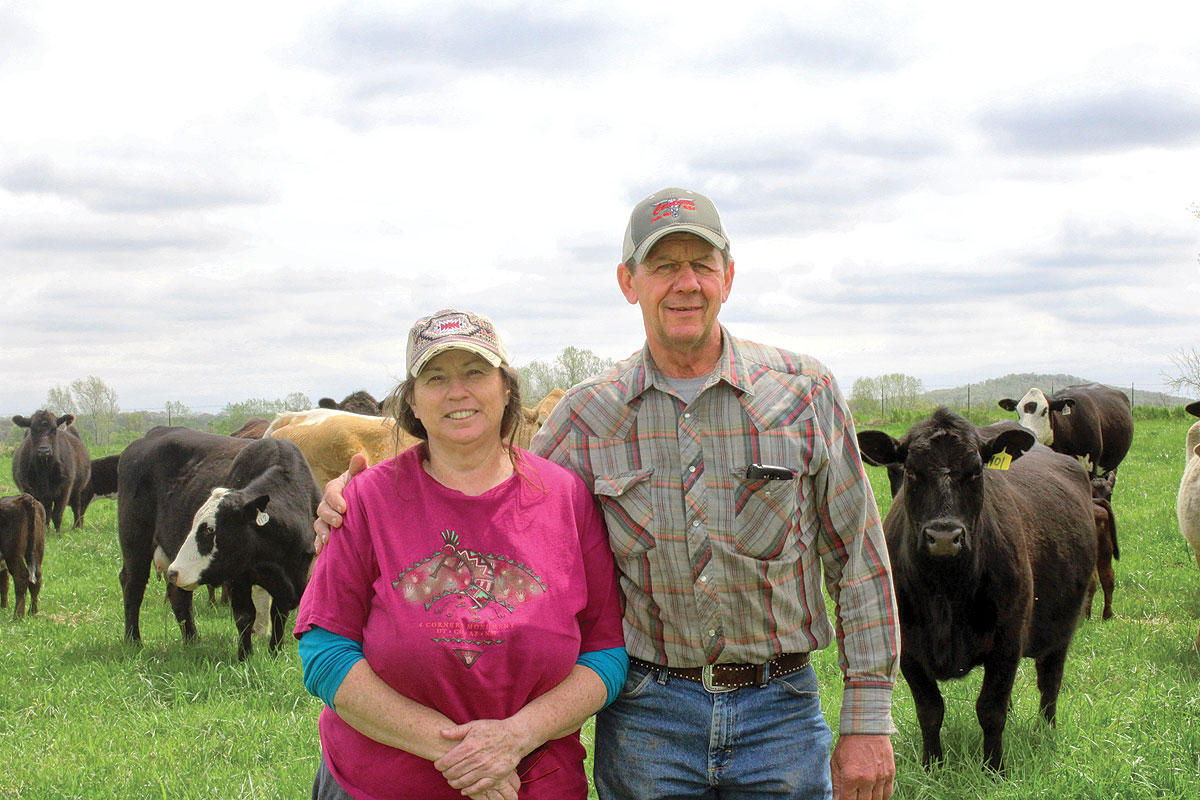
Spartan Valley Shorthorns works to breed show-quality animals for young exhibitors
Young Calin Smith of Spartan Valley Shorthorns has an admirable end goal: to get high-quality show stock in the hands of kids to be able to compete at a higher level. Those kids, typically in 4-H and FFA, also gain the foundation for a quality herd.
“I want them to have a show heifer to compete,” he said. “But most important of all is that heifer can raise calves,” he said. “To me, that’s the future of our farm.”
It’s a tactic that just might keep more kids on the farm once they’ve grown up. Calin said he doesn’t know of any students at Logan-Rogersville High School showing animals. And that’s a concern, because taking care of animals, let alone showing them, teaches life lessons of discipline, responsibility and patience. “It really instills a good work ethic at a young age,” Calin said.
He has about 30 Shorthorns on the nearly century-old, 100-acre family farm between Sparta and Rogersville. He leases another 100 acres for brome, fescue and grass hay, which he supplements with a little alfalfa. The cattle also consume 3 to 5 pounds a day of liquid feed. Calves are weaned by 6 months. The only calves that go to the stockyards are those that don’t make the cut for either Calin’s replacement heifers or to be a show heifer, show steer or herd bull for someone else.
“Our main goal is to sell in our own production sale or privately at the farm,” he said.
During the day, Calin works at his own company, SmithCo Construction, specializing in residential construction; shop, barn and home remodels, and framing. But from 6 to 9 in the evening, you’ll find him at the farm with his cattle. This year, his KA-BA Rose 13E heifer took first prize in the Shorthorn division at the Ozark Empire Fair in Springfield, Mo., and the Missouri State Fair, Sedelia, Mo., with plans to compete at the American Royal and other fairs and shows in the Midwest.
He credits his father and grandfather with buying their first Shorthorns in 1976, after trying different cattle breeds. The family likes their easy disposition, maternal instincts and calving ease. According to the American Shorthorn Association, crossing Shorthorn bulls with Angus cows over a cow’s lifetime also produces an extra calf.
“We have really good genetics built over years and years and years,” Calin said. His herd includes several recip cows, whose implanted embryos come from several sources, including Rodney Rod, a breeder in Sublett, Ill., who sells semen and embryos from a herd of more than 400 Shorthorns.
“We never miss a chance to buy genetics from another producer that might help our own herd,” he said, adding that he has three embryo donor cows of his own.
All cows are artificially inseminated except for the recips, which he will clean up with his Shorthorn bull.
“One reason we clean up with a purebred Shorthorn bull is that calf can be registered as Shorthorn Plus, meaning its 50 percent Shorthorn,” he pointed out. “We sell Shorthorn Plus heifers and invite any commercial producers to come out to look at the calves. They will speak for themselves.”
Calin and his brothers, Colt and Cody, grew up showing with their dad all over the country, but Calin is the only one of the trio where showing stuck. His year is anchored by shows and an annual production sale.
For example, in early December at Wellington, Mo., which is located near Kansas City, he and a few other producers will have show heifers, bred heifers and cow/calf pairs for sale.
Calin has calves priced for anyone’s budget, all with good genetics.
“That will help kids get started. I can make a little money and have some fun. Any kid who buys a heifer from us, any questions they have we’ll answer. We’ll try to help them at a show and get ready for one,” Calin said.






